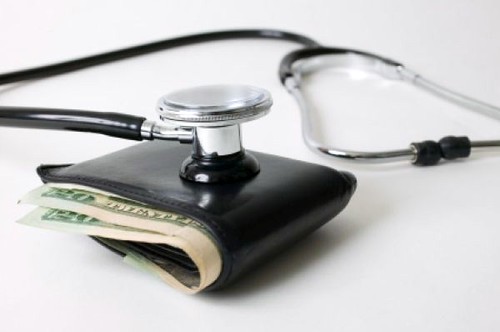There is another protection that you should already have in your risk management portfolio. Let me put it straight to you, after the chance of involving in an accident, the next highest possible mishap would be ending up in the hospital and required to stay a night for observations. Your admission could due to any causes, accident-related, common symptoms such as food poisoning, dengue fever and even acute appendicitis!
Rest assured that your stay will definitely cost you money. If you are admitted to a private hospital, prepare to pay an arm and a leg (simply means paying a lot of money for something).

What is covered under the Medical (Hospitalization & Surgical) Insurance?
The main coverage would be the Room & Board (R&B), almost like a hotel room package. A typical Medical Insurance R&B package would look like this:

Source: www.allianz.com.my (MediCover)
Room & Board RM200 means that you are entitle to stay in ward package with rate of RM200 and below. However, you can still request the hospital to upgrade your room to a better one (e.g. from Twin Sharing to Single Room), but there are terms and conditions applied by respective insurance companies.
The Annual & Lifetime Limit is tied to the R&B. In general, the Table of Benefits would look like the above table. You should refer to your policy documents for the actual Table of Benefits to see the exact figures. The Annual & Lifetime Limit gets lesser as you make claims.
Co-Insurance / Co-Payment is a common phrase in Medical Insurance policy write-ups. It means that you as the policyholder will be required to pay a certain percentage from the total claims made. If you policy didn't mentioned anything on Co-Insurance or Co-Payment, then it usually means that all claims are to be borne 100% by the insurance company.
Various insurance companies has different percentage set as Co-Insurance or Co-Payment, ranging from 10 to 20 percent. Some plans would also have cap on the Co-Insurance / Co-Payment, and some don't!
For your own benefit, you are encourage to check if your Medical Insurance has no Co-Insurance / Co-Payment or, if there is, make sure there is a cap limit for it. Else, it would seemed illogical for you to pay your insurance premium and fork out for the medical bill at the same time.
Here are some other important elements in the medical coverage that you should look into:
i) Pre-hospitalization and Post-hospitalization claims, where you need to find out how many days of pre-hospitalization and post-hospitalization is claimable.
ii) Limits payable for outpatient treatments; for Accident, Cancer and Kidney Dialysis respectively.
iii) Room & Board and Intensive Care Units (ICU).
Here are some tips for Medical Insurance:
i) Declare all your health and medical history when you are applying to ensure you will not any problems when it comes to claim later on. You might want to ask your parents about any disease that you might have inherited.
ii) Always keep the Original Receipts for speedy claims.
iii) Always keep your Medical Card (if any) by your side (or in your wallet).
iv) You might need to place a deposit even if you have a valid Medical Card, so it is best to have a credit card or two to ensure a smooth admission process.
v) Go for the best possible Medical Insurance plan you can afford, it is always easier to downgrade than to upgrade. As long as you are healthy, upgrading should not be a problem.
Medical Insurance should be in your priority when you are shopping for your first insurance policy due to the high possibility of being admitted in a hospital.
Let's hope one day that banks or private hospitals can provide loans for medical fees which we all can pay by installments. But until that day comes, it is a better idea to ensure you and your entire family is protected at least with a minimal amount.




0 comments:
Post a Comment